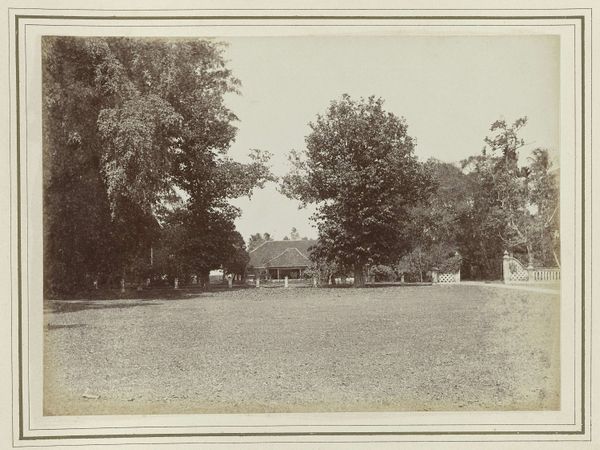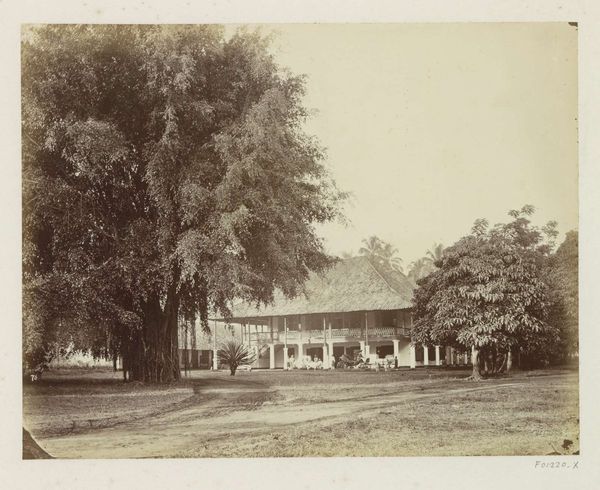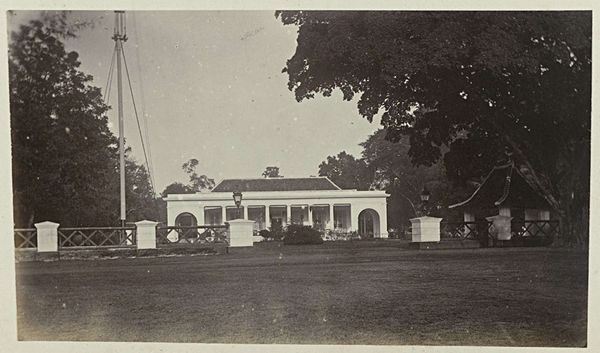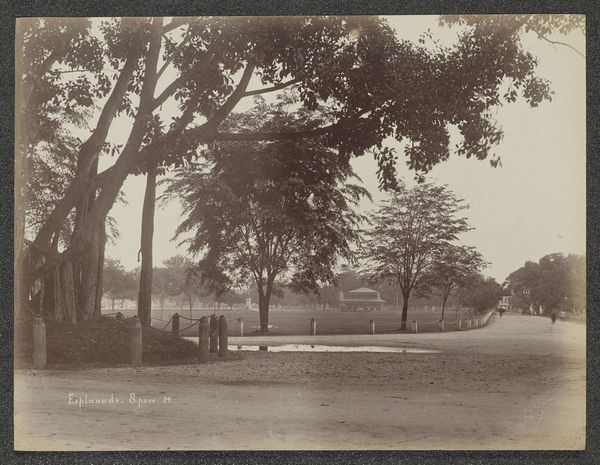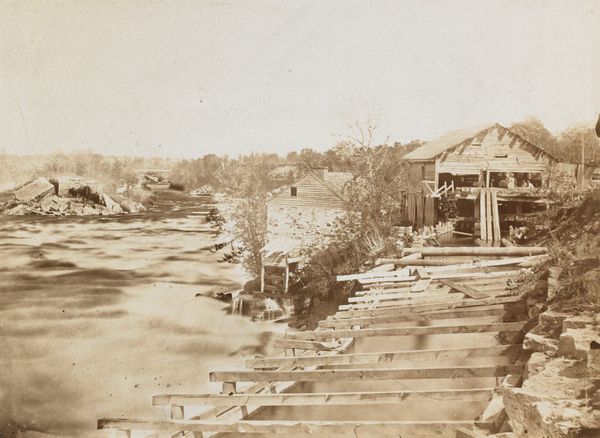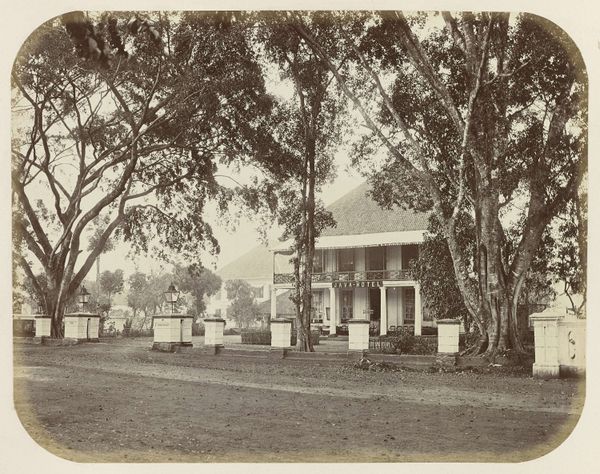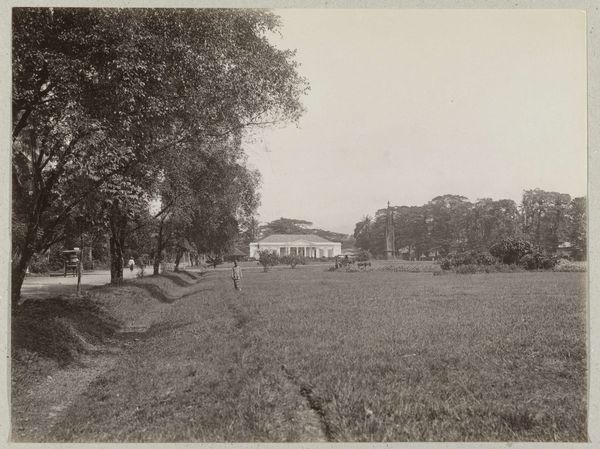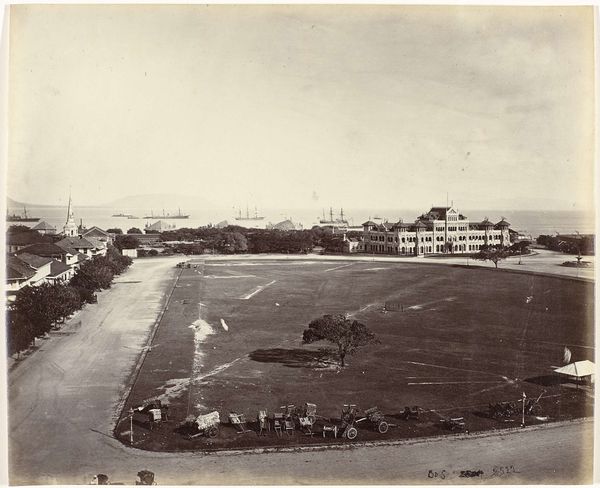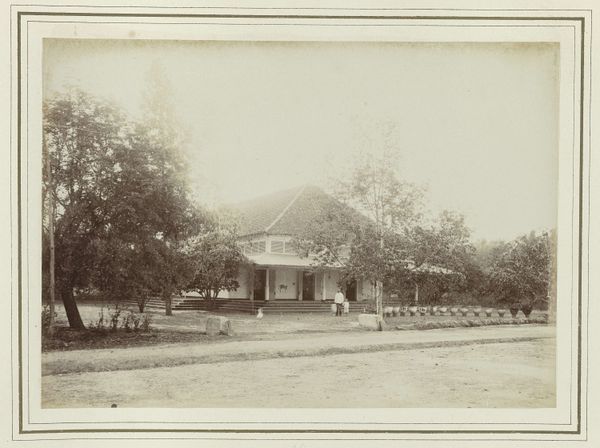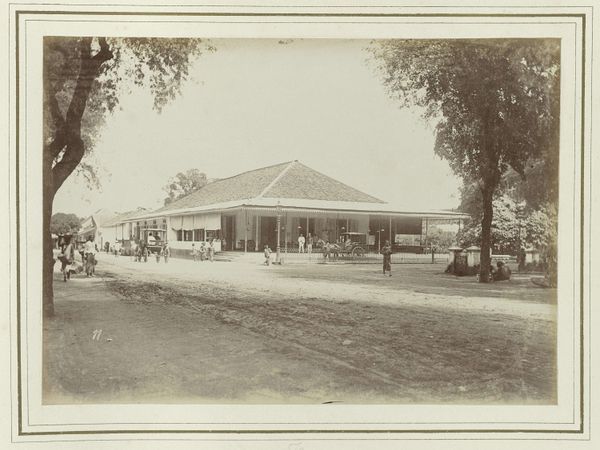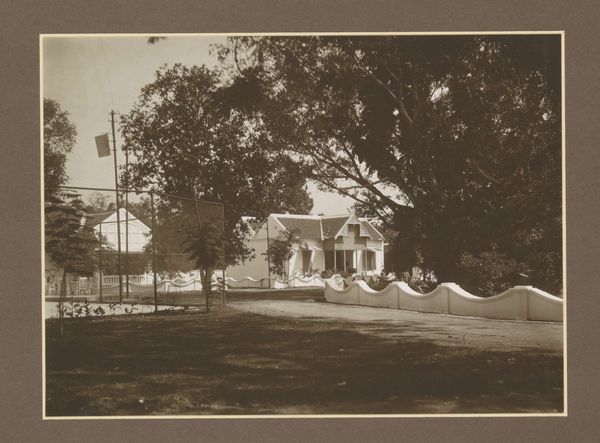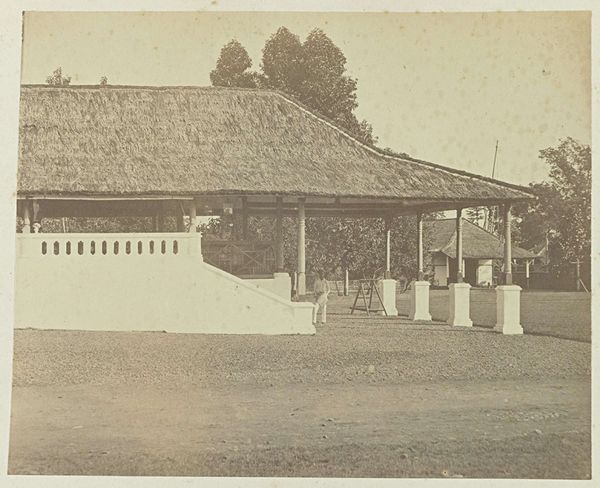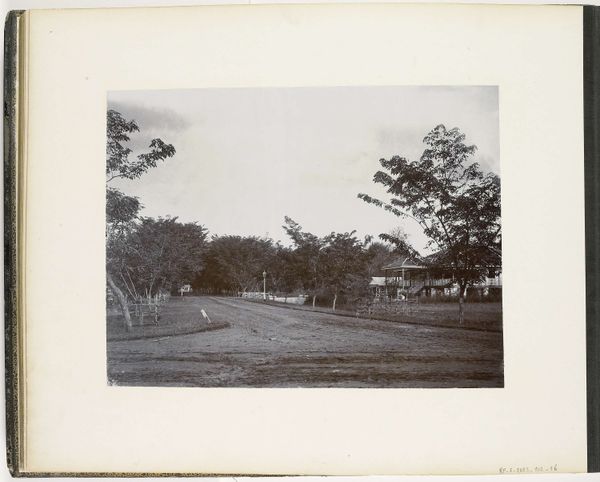
print, photography
# print
#
landscape
#
archive photography
#
photography
#
historical photography
Dimensions: height 157 mm, width 188 mm
Copyright: Rijks Museum: Open Domain
Curator: Let’s consider "Veld naast gebouw," a photograph created between 1863 and 1869 by Woodbury & Page, currently housed in the Rijksmuseum. Editor: Ah, yes. It gives me a feeling of distant observation, like looking into a half-forgotten dream through a sepia filter. The light is intriguing—soft but definite, almost as though the sun itself were hesitant. Curator: This photography likely used the Woodburytype process, a complex method using gelatin relief images exposed to light, transferred to lead, and then pressed onto paper. Consider the labor and materiality embedded in that process. Editor: Extraordinary! The weight of that craft is in every particle of tone! And look at how the repetitive forms of the roofs and the vertical columns provide a visual echo. It feels like a place designed for measured ritual, maybe with whispered secrets among those thatch roofs. Curator: The social context here is critical. Woodbury & Page were among the first commercial photographers in the Dutch East Indies. The architecture indicates a colonial presence, reflecting unequal power dynamics inherent in that relationship. Editor: Yes, one can’t help but see that now; the architecture now strikes me as somewhat severe, even against the vastness of that seemingly endless field. Did people pause amidst that controlled landscape to perhaps dream of their distant homelands or to ponder this imposed order? There is this feeling that a silent dialogue has occurred over these houses. Curator: Absolutely, photography like this became instrumental in shaping colonial narratives, showcasing both the “exotic” locale and the markers of European influence. How these images were consumed and what roles they played within that context should be remembered as well. Editor: Makes one wonder who and how many faces the single figure present may represent to that area of order. It reminds me of some dream of enforced calm over an enormous repressed desire. Curator: Thinking about the means of production—the distribution networks that circulated images like these globally—shows us photography’s role in creating and perpetuating imperial narratives. It is not an impartial artform. Editor: You are correct, It leaves me thoughtful. Every shadow is now deeper, every texture feels more tactile, pregnant with questions of power and place, but it still allows for a little poetry to be made between now and then. Thank you!
Comments
No comments
Be the first to comment and join the conversation on the ultimate creative platform.
